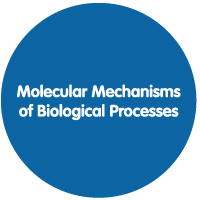
 | | Proteins in Disease MechanismsCoordinators
Manolis Matzapetakis and Ligia Martins Objectives
Proteins are essential macromolecules in the cell which are involved in a diversity of cellular processes and functions. However, proteins also play a role in disease through a diversity of mechanisms. This curricular unit will cover different cases in which the multiple roles of proteins in disease processes will be illustrated using examples:
i) proteins as toxic agents (gain of function) or facilitators of disease (protein pathogens); ii) proteins with impaired biological activity (loss of function) or localization (trafficking defects); iii) defects in protein networks (defective
interactions); and iv) proteins as facilitators (virulence factors) in disease processes. At the end of this curricular unit, students will be expected to understand the role of a particular protein in the broader context of cellular function and dysfunction (disease). Syllabus
1. Proteins in disease: an overview
Protein misfolding in disease: amyloids (gain of function); activity (loss of function); localization (trafficking defects). Protein homeostasis.
2. Proteins in neurodegenerative amyloid diseases
Amyloid-beta peptide and AD; Transthyretin and FAP; alpha-synuclein and PD. Modulators of protein aggregation and mechanisms. Cellular and organism models.
3. Protein trafficking and sorting defects in Disease
CFTR and Cystic fibrosis. Small molecule therapeutics. Choroideremia and REP-1. Protein Replacement therapy.
4. Metabolic Diseases
Inborn errors of metabolism. Lysossomal disorders. Phenylalanine hydroxylase and Phenylketonuria.
Pharmacological chaperones.
5. Protein dysfunction in Cancer
Faulty protein interactions in cancer: Loss of p53 function. Defects in the BRCA1 protein. Cancer as a disease of protein aggregation.
6. Proteins as virulent agents
Proteins in viral infections. Bacterial toxins: anthrax. Prions as infectious agents. Evaluation
In the tutorial-guided activities the students will select a topic for which they may be asked to will write a short essay (1-2 pages), after literature search and discussions with experts. Student evaluation will emerge continuous evaluation during tutorials and problem solving sessions and presentations. Main Bibliography - Protein Structure and Diseases (2011) R. Donev (Ed) Adv Protein Chemistry and structural biology Vol 83, Academic Press, Elsevier
- Protein Misfolding Diseases (2010) M. Ramirez-Alvarado, J.W. Kelly, C.M. Dobson (Eds) Wiley Series in Protein and Peptide Science, Wiley
- Misbehaving Proteins (2006) R.M. Murphy, A.M. Tsai (Eds) Springer-Verlag
- Amyloid Proteins (2005) J.D. Sipe (Ed) Wiley-VCH
- Protein Folding and Metal Ions: Mechanisms, Biology and Disease (2010) C. M. Gomes and P. Wittung-Stafshede (Eds). CRC Press Group. Taylor & Francis (USA)
- Protein Misfolding, Aggregation and conformational Disease (2006) V.N. Uversky and A.L. Fink (Eds.) Protein Reviews Series. Springer
- Powers et al (2009) Biological and chemical approaches to diseases of proteostasis deficiency. Annual Reviews of Biochemistry 78, 959-91.
|
back to Molecular Mechanisms of Biological Processes Units

